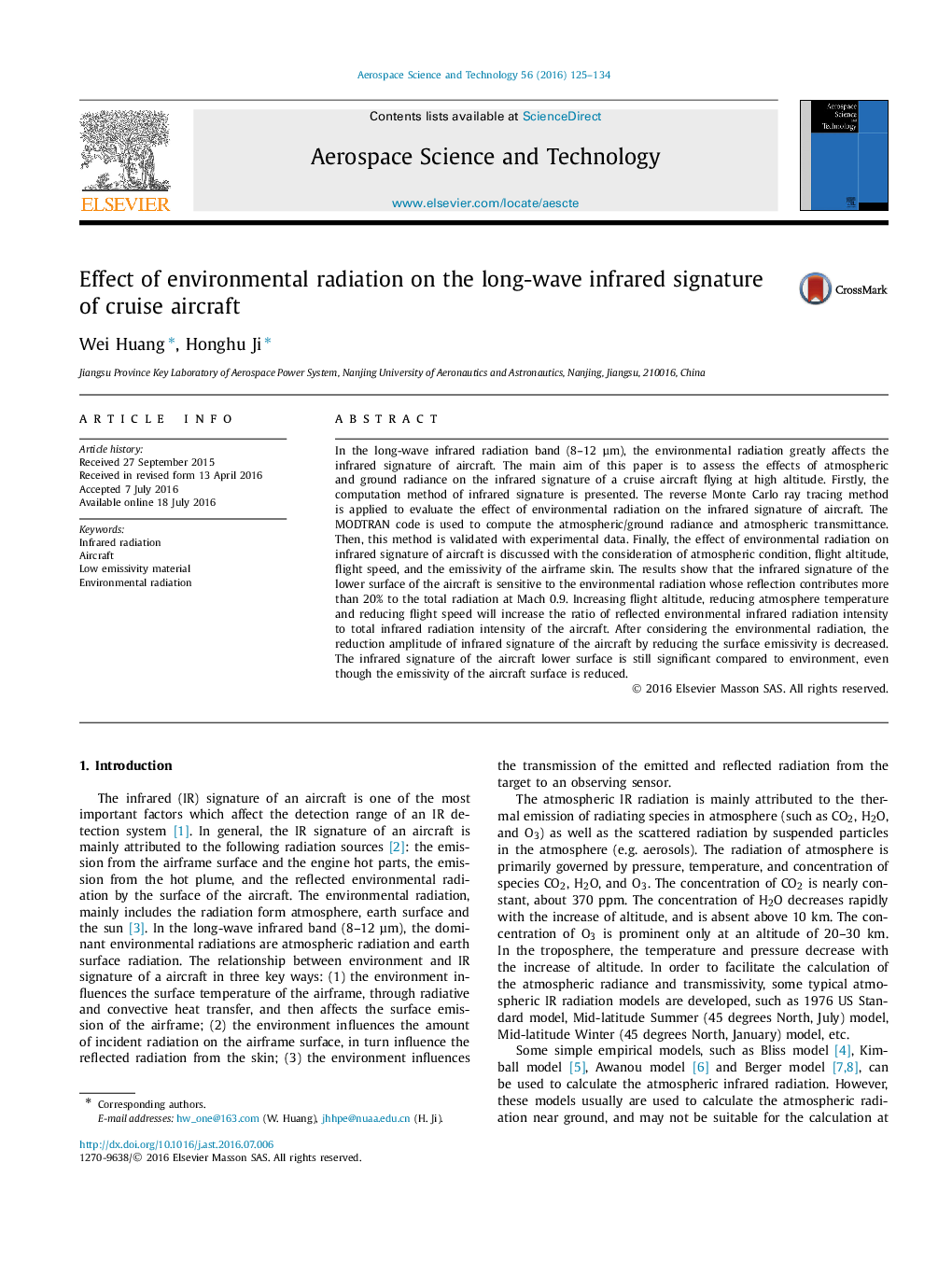| Article ID | Journal | Published Year | Pages | File Type |
|---|---|---|---|---|
| 1717594 | Aerospace Science and Technology | 2016 | 10 Pages |
In the long-wave infrared radiation band (8–12 μm), the environmental radiation greatly affects the infrared signature of aircraft. The main aim of this paper is to assess the effects of atmospheric and ground radiance on the infrared signature of a cruise aircraft flying at high altitude. Firstly, the computation method of infrared signature is presented. The reverse Monte Carlo ray tracing method is applied to evaluate the effect of environmental radiation on the infrared signature of aircraft. The MODTRAN code is used to compute the atmospheric/ground radiance and atmospheric transmittance. Then, this method is validated with experimental data. Finally, the effect of environmental radiation on infrared signature of aircraft is discussed with the consideration of atmospheric condition, flight altitude, flight speed, and the emissivity of the airframe skin. The results show that the infrared signature of the lower surface of the aircraft is sensitive to the environmental radiation whose reflection contributes more than 20% to the total radiation at Mach 0.9. Increasing flight altitude, reducing atmosphere temperature and reducing flight speed will increase the ratio of reflected environmental infrared radiation intensity to total infrared radiation intensity of the aircraft. After considering the environmental radiation, the reduction amplitude of infrared signature of the aircraft by reducing the surface emissivity is decreased. The infrared signature of the aircraft lower surface is still significant compared to environment, even though the emissivity of the aircraft surface is reduced.
